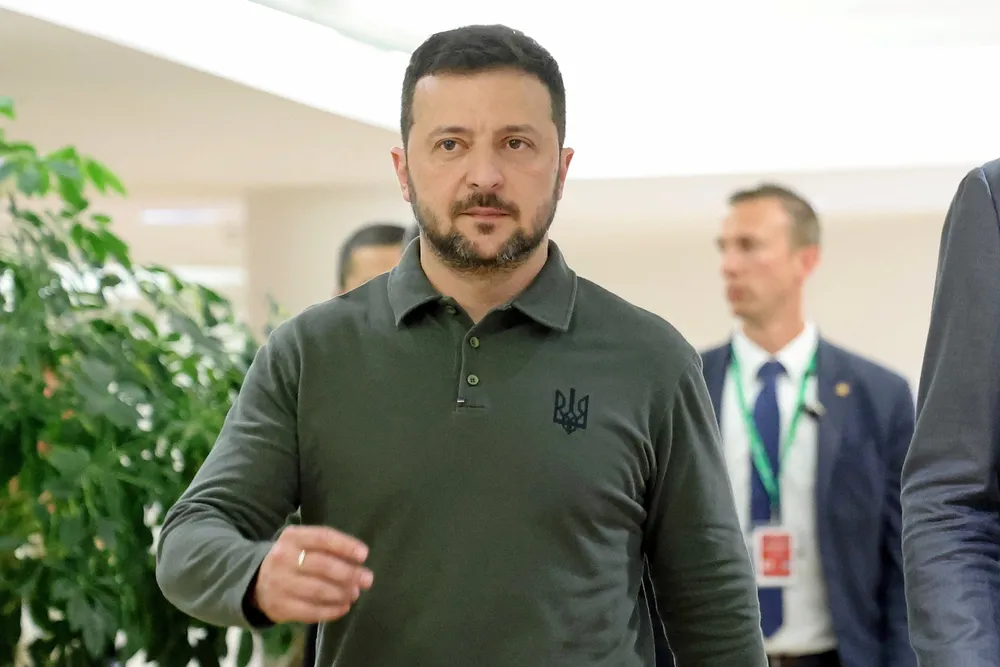Ukraine sets offshore wind target and plans green power auctions
Russian missiles have devastated Ukraine’s power system but country hopes that wind and solar farms can offer renewal

Ukraine plans to massively ramp up its renewables capacity by 2030 to help relieve its war-torn power system, including by deploying offshore wind in the Black Sea, and will begin holding green auctions to encourage investment.
The Ukrainian government wants to add 10GW of new renewables capacity by the end of the decade and attract $20bn in investment to achieve this goal.
By doing this, it hopes to have renewables meeting 27% of its power needs by 2030, up from 9.2% in 2020, with more recent market data not publicly available.
Ukraine boasted around 55GW of grid capacity before Russia launched its full-scale invasion in 2022, largely through nuclear and thermoelectric power plants. Officials estimated earlier this year that missile strikes targeting its facilities had seen this drop to below 20GW.
Ukraine now hopes to ease the crippling pressure on its grid – now subject to rolling blackouts – by having 6.2GW of wind, 12.2GW of solar, 4.7GW of hydropower, 876MW of biofuels and 40MW of geothermal generation online by 2030.
That would bring its total renewables fleet to around 24GW.
Notably, Ukraine’s wind target includes entering the offshore wind market, with 100MW of capacity planned. It would have to deploy that capacity in the Black Sea, which it shares with Russia and has been the site of fierce naval warfare.
Ukraine had reached nearly 1.7GW of wind capacity before the war, excluding capacity in already annexed areas of the Donetsk and Luhansk regions and Crimea, so its 6.2GW target aims to almost quadruple that number.
The offshore wind goal is "interesting and, to some extent, admirable," he said, adding that this "can only be feasible after the full de-occupation of these waters and the guarantee of a secure regime."
Sean Whittaker, lead offshore wind specialist with the World Bank Group’s International Finance Corporation, said that "beyond the massive challenge posed by the Russian invasion, other challenges remain in developing Ukraine’s potential," including grid integration and unexploded ordinance.
Despite the ongoing invasion and all-out assault on its energy system, Ukraine has managed to keep deploying new wind power capacity, including installation last month at a wind farm in its west.
UWEA forecasts that, by the end of next year, about 1GW of new onshore wind power capacity will be commissioned, with 4GW to follow by 2028.
‘Long-awaited’ green auctions now planned
Encouraging investment in an energy system targeted by Russian missiles on a daily basis is no easy task.
UWEA said achieving this is “directly dependent on addressing the existing market challenges,” including adopting “market-stimulating initiatives and decisions.”
One such decision is what Konechenkov said is the government’s approval for a “long-awaited” launch of a green auction system later this year, which he added will make the Ukrainian renewables market “more competitive and predictable”.
The pilot auction aims to push through 88MW of wind, 11MW of solar and 11MW of other types of renewables, before scaling up to much larger rounds in the future.
Bidders would enter 12-year offtake agreements with Ukrainian state-entity Guaranteed Buyer, which will offer €0.09/kWh ($0.1/kWh) for wind and solar and €0.12/kWh for other types of green generation.
UWEA also stressed it is crucial that Guaranteed Buyer settles debts under its previous green tariff system that had seen tensions flare between investors and the government before the Russian invasion.
Ukraine introduced feed-in-tariffs in 2009 aimed at reducing dependence on Russian gas. But Guaranteed Buyer struggled to make payments to generators, which suffered heavy losses and threatened legal action against the state.
One Russian missile can “annihilate” such a facility, he said, but wind power, with its inherent decentralisation, “stands robust against the focused devastation that a single missile strike could wreak.”
Konechenkov said developers have highlighted the difficulties in securing financing and war insurance for such risky projects, logistical issues and lengthy permitting procedures.
But he added: “In the darkest times, wind turbines stand tall as harbingers of stability, hope and renewal.”
(Copyright)